Fire Support Base Burt
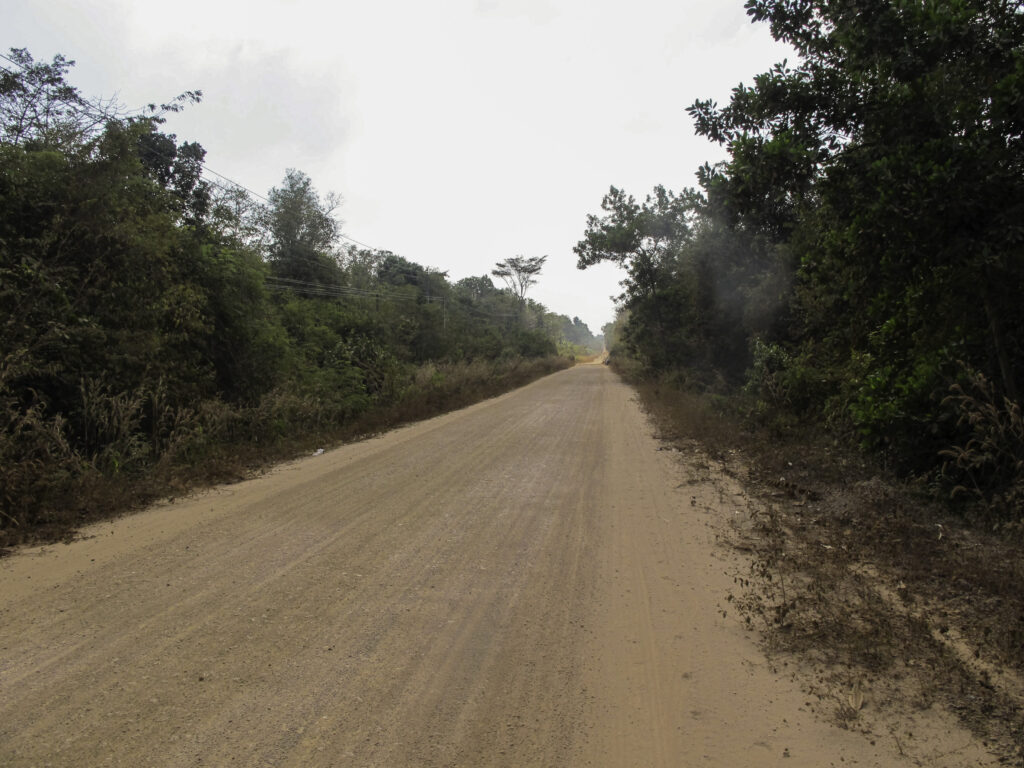
In an especially remote location in northern Tây Ninh province, less than 10 kilometers south of the Cambodia border in a patch of dense jungle is the site of the famed Fire Support Base Burt. FSB Burt was the site of the Battle of Suối Cụt on 1-2 January 1968. This battle was the inspiration for the second half of the movie Platoon. Film director Oliver Stone was one of the base’s defenders, as was Vietnam War novelist Larry Heinemann.
Part of a wall of US Army installations that traced the frontier from Phước Vĩnh in Bình Phước province southwest to the Fishhook region and the Parrot’s Beak region northwest of Saigon, Burt’s role was to help bolster the capital city and its periphery from PAVN and NLF incursions into Vietnam from Cambodia. Today, this part of Vietnam is desolate, and the forests here are thick. My coordinates had me turn south from Provincial Road 794 onto a dirt road, and ride south for about five kilometers. I stopped when I landed at the spot. The site is unmarked, unheralded, and doesn’t get many visitors, so I couldn’t be sure if I was in the right place.
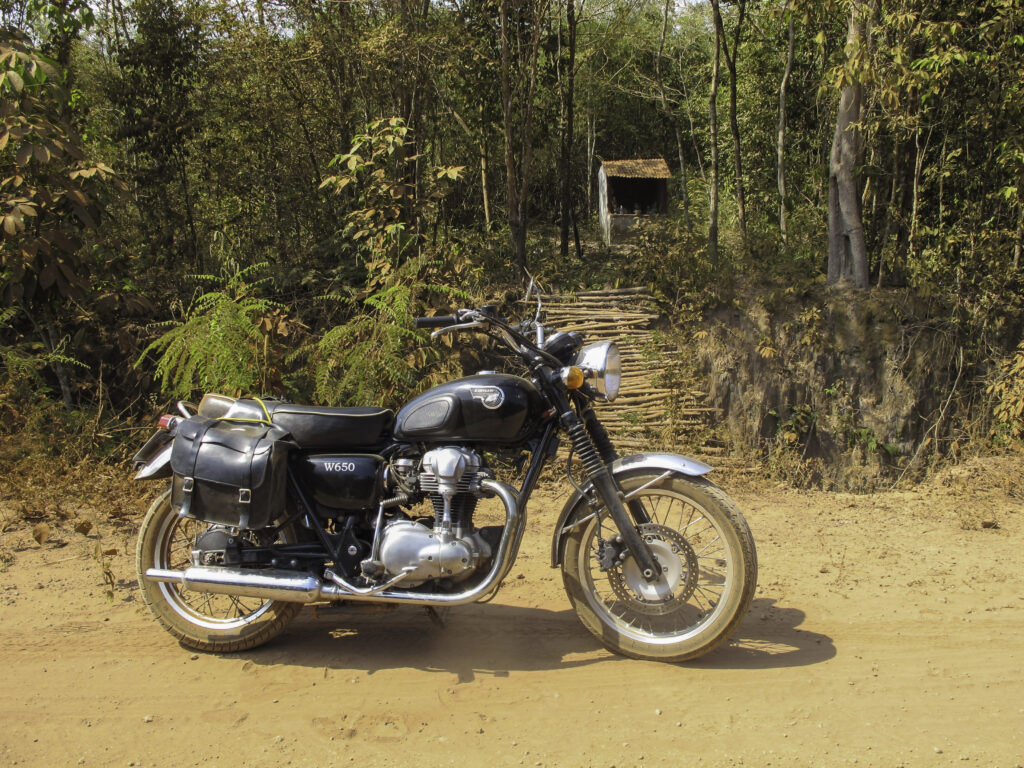
Yet I knew from maps that FSB Burt was bisected by a dirt road in 1967-68, much like the dirt road I was on. Upon noticing a small homemade altar with a stuffed joss stick bowl on the side of the road near where I’d stopped, however, I knew. Homemade altars can be a clue that you’ve stumbled onto a Vietnam War site, especially when that altar is in the middle of the forest. They don’t appear at random. They’re usually erected by people living nearby. Vietnamese are afraid of wandering spirits, and battlefields are full of wandering spirits. The altars are there to recognize those confused ghosts and calm them down from their perpetual confusion about their existence. Yet the FSB Burt site is surrounded for kilometers on all sides by jungle. Nobody lives here. Battle veterans or MIA investigation teams likely installed the altar.
In late December 1967, all sides had agreed on a 36-hour ceasefire to take effect over the New Year period. The U.S. Army units from the 22nd Infantry, stationed at FSB Burt, had no reason to believe that it would be respected, particularly as elements of the 22nd had gotten hit over Christmas that year during another truce period. On New Year’s Eve 1967, ambush patrols from FSB Burt encountered light contact a mere 200 meters from the base perimeter. Contact was made again the next evening, 1 January, and shooting was followed by sporadic mortar fire onto the base. It intensified as the evening wore on, with 200 more rounds falling on Burt between 11:30 and 11:45 that night. At 12:01 AM, the first of several human wave attacks descended on Burt. It turned out that the base was surrounded by about 2500 PAVN regulars and NLF troops, concentrated in the jungle to the south. The fighting was extremely close and hand-to-hand, and Communist troops penetrated the base perimeter several times.
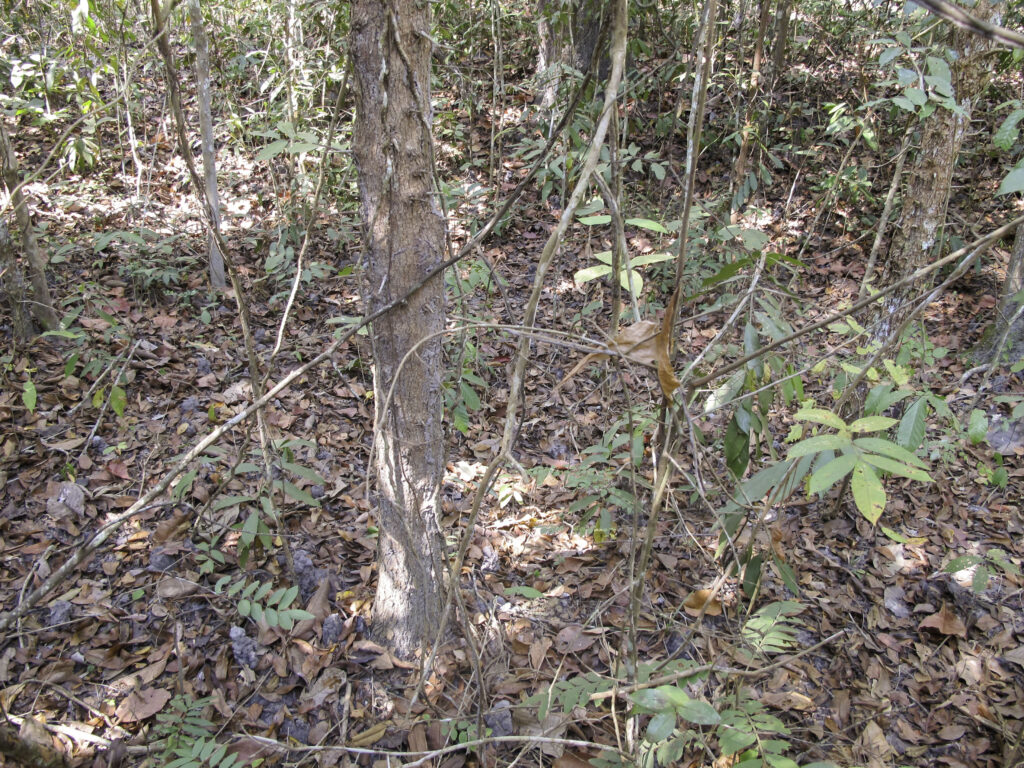
More wave attacks followed throughout the night, and the battle was so close that the Americans had to horizontally level their howitzer barrels and fire ‘beehive’ rounds, filled with up to 8,000 flechettes, directly at advancing ground troops. Airstrikes, artillery, napalm, cluster bomb units, and Spooky Gunships were also called in, and FSB Burt commanders even had to order strikes on their own positions. By 5:00 AM on 2 January 1968, the Communists began to melt away back into the jungle, leaving behind nearly 400 fallen soldiers, many of which were piled up around American bunkers and fighting positions. The Americans lost 23 soldiers, with nearly 150 wounded. As the sun came up and the battlefield quieted, the Army got to work cleaning up, putting out fires, and bulldozing the dead into mass graves, as seen in the final scenes of Platoon.
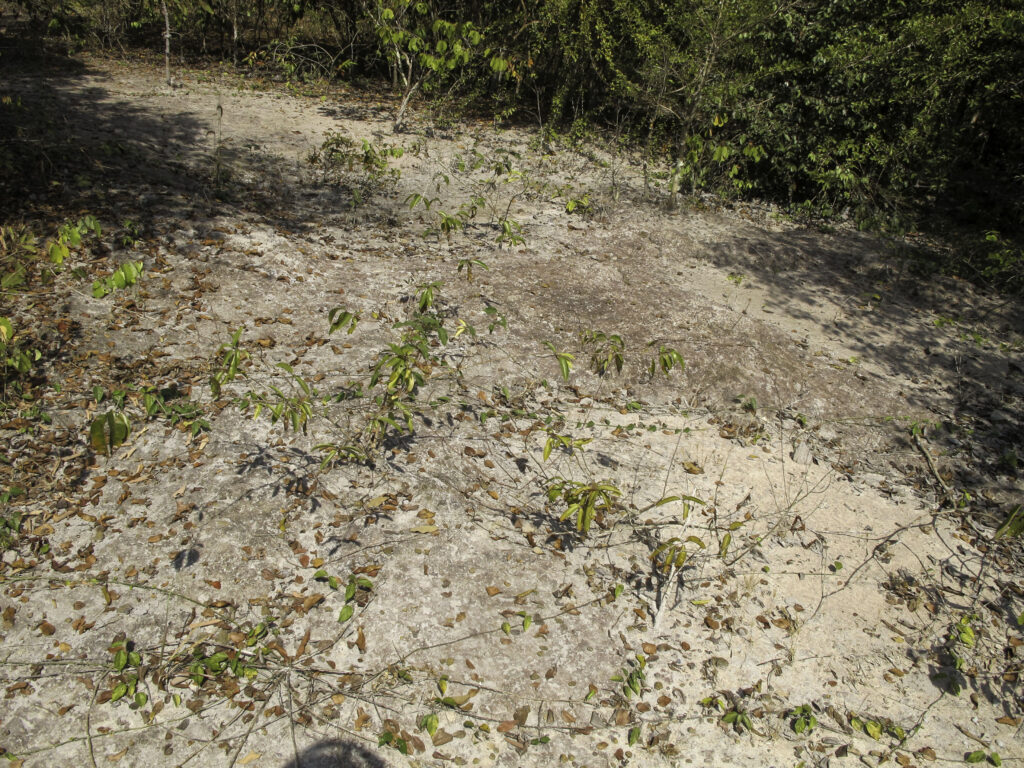
The jungle has reclaimed Burt. Photos from 1967 show that Burt was a circular clearing in the forest; everything had been cut down to build this temporary base. It’s unlikely there would have been permanent structures here, HQ, gun positions and fighting positions would have been foxholes and sandbags. Thus, nothing remains. I visited in late December, which is the dry / cool season in Vietnam. Yet temperatures in winter can and did climb to about 37 degrees (99 F) by 10:30 the morning I was there. As I arrived to the site, I visited the small shrine, lit three joss sticks and said a prayer for the men who gave their lives here before I continued into the thick woods. Before entering, I told myself I’d explore for 30 minutes and then get out. Given the heat and landscape, it would have been very easy to quickly get lost and exhausted. This location is very remote. In the dry jungle, little evidence of a battle remained, though I noticed craters and other landscape features that suggested that they could have once been firing positions or foxholes. I got disoriented and dizzy several times, and my senses were heightened in an atmosphere that I characterize as heavy. The jungle was so dense at FSB Burt that morning that it felt like dusk.
At one point I encountered a huge crater, possibly 60 meters by 60 meters. This was a hard feature to understand, as there was nothing else like it in the jungle. I thought that it could have been an artillery position, so I descended and explored the pit and the walls of the crater. I came back up no closer to a conclusion and kept on moving. Later that day, through research and sharing my description with people involved in MIA searches, I learned that I had walked through a site that was once a mass grave of Vietnamese soldiers. One that was dug and filled with American bulldozers just as the last American troops were evacuating after the battle, only to be dug up again years later by the Vietnamese Government.
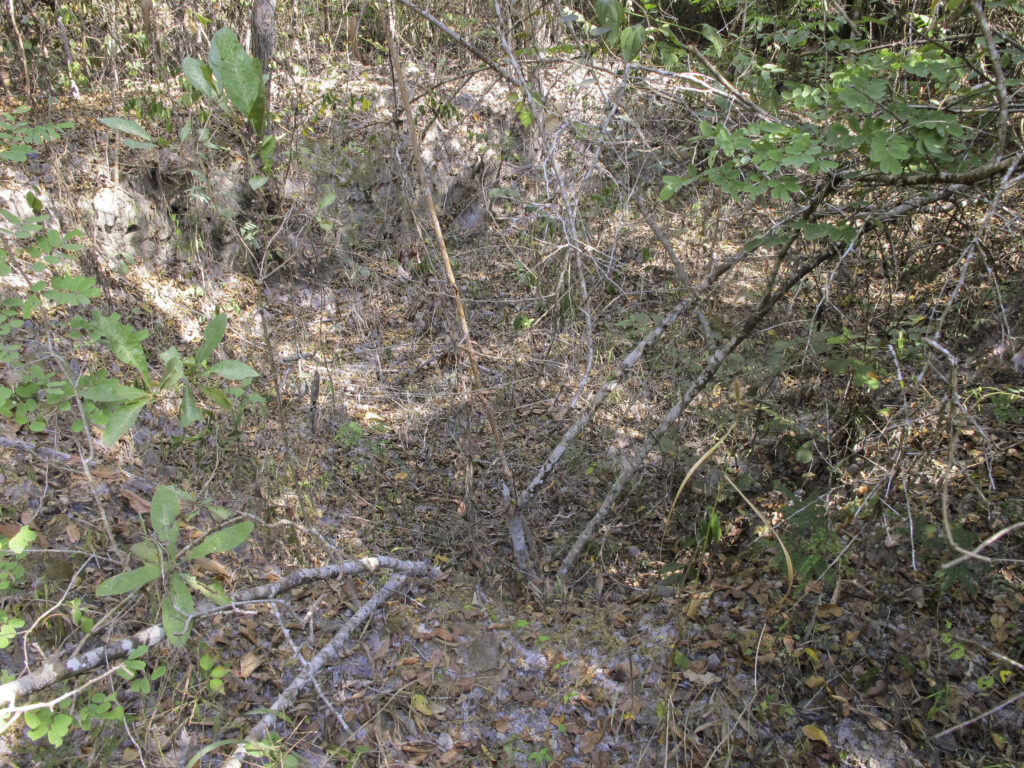
Close to four hundred North Vietnamese troops killed in 5-6 hours is a lot. The feature suddenly made sense; I had been exploring an exhumed mass grave. After the war, the Vietnamese government sent specialists to battle sites to exhume bodies from these mass graves. This effort continues to this day, and the goal is to get their remains home to their families or rebury them in formal liệt sĩ (“martyr”) military cemeteries.
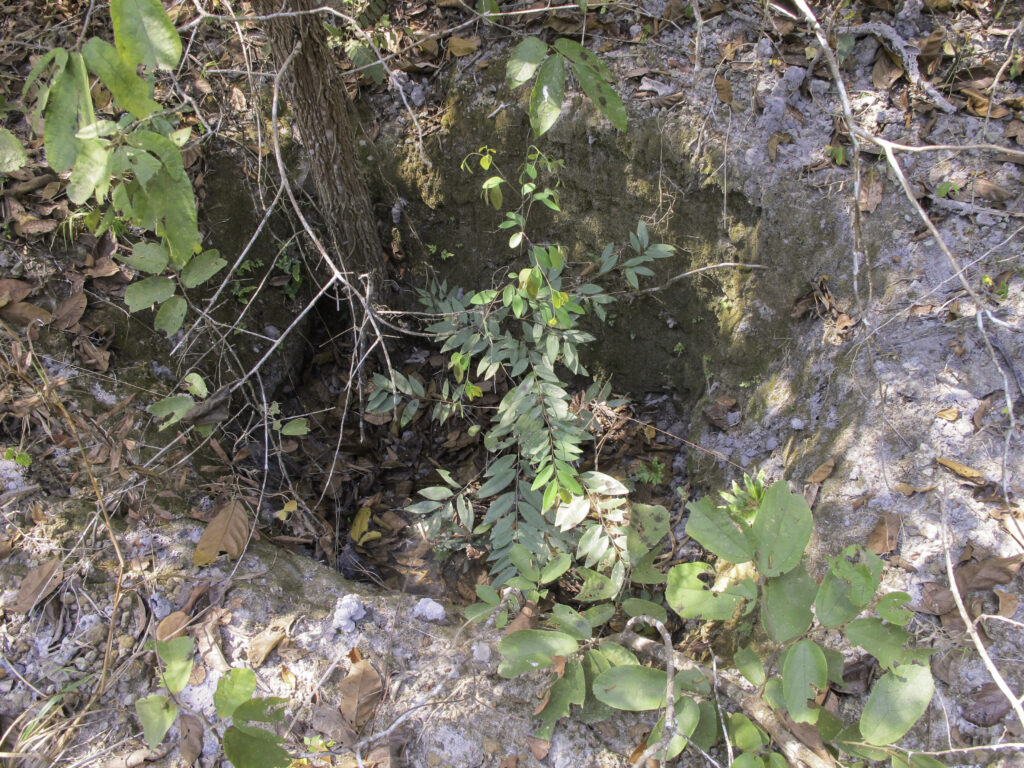
At that point, I got out of the jungle. Having seen maps of the base, it’s clear I was near the center of the former FSB Burt. Yet I’d only scratched the surface of the expanse of the battle. Like many places from the war, FSB Burt isn’t marked, reminding the explorer that this country is speckled with hundreds of monumental sites that take some digging and determination to find.
How to get there
FSB Burt is a 130 kilometer drive which proceeds north on historic Highway 13 (“Thunder Road”) through Bình Dương and Bình Phước provinces. Turn west at An Lộc onto the provincial road, and let your coordinates lead the rest of the way.
Decimal coordinates: 11.582661 106.369776
SB
Continue reading
The nearby Dau Tieng Base Camp still has its runway fairly intact and some old structures such as the swimming pool that was used by GIs during the war.
My brother James William McCaffrey died at this battle. If anyone knew him I would appreciate any memories. He was in A 3 22.
In country 10 April 67 assigned to 4 Bn 23rd (mech) at Cu Chi, 25th Div. Base camp. I was wounded 23rd June ’67. After recovering, I returned to the 23rd only to find out that the 3rd brigade, 25th and the 3rd brigade 22nd were flip flopping where upon I ended up with the 2bn 22d mech (HHC), Dau Tieng. Took a ride to Burt as a 11B on the 1st where it really hit the fan. Mass confusion was the order of the day, over run. I remember staying close to a quad 50 and rolling around the ground trying to keep cover. Flechette and small arms fire were so close over my head….well you figure it out. The gunner on the quad was missing part of his hand but he kept loading and firing. That time never goes away.
In the wee hours of January 2nd we (4th Bn 9th Inf Rgt “Manchus”) were attempting to be inserted into Burt via Eagle Flight. Each time we attempted to land VC mortar squads remaining in the jungle fired into the perimeter preventing us from landing; after our 2nd or 3rd attempt we had to return to our base camp in order to refuel. Some time around daybreak we finally touched down and began setting up our own perimeter further from the wood line, dug our fox holes, set out multiple strands of concertina wire, claymores, trip wires, etc. On the road depicted in the first photo twin-40s were set up (not sure if by the Manchus or the Regulars). Policing up of dead enemy bodies male, female, young and old (some headless, limbless, riddled with fleshettes) began in earnest, between 300-400 as I recall. The stench was horrific and I believe this experience and the subsequent 10 days at Burt were my official baptism into the war. Daily S and Ds were met with sniper fire and squad sized fire fights. We captured mortar tubes and 61mm rounds and bicycle to ferry them. Practically every day around 1600hrs (just when the resupply choppers made their sorties) the L-Z was mortared from a different area of the jungle. I can only thank the Lord that we weren’t there during the initial attack.
I was at FSBC Burt for Christmas, My best friend James Harvey rotated there at the New Year, therefore I missed this battle. Harvey was never the same after that. On Jan. 2 we sat on the airstrip with all the ammo we could carry waiting to go but it was too hot to bring us in. we were there the next day. The sight was so eerie I remember it clearly to this day. After 43 years Harvey and I reconnected but we never talked much about the battle. I was wounded on May 4th in a 122 mm rocket attack at Dau Tieng and eventually sent back to the states. Harvey spent 2 1/2 years in Nam, came back, and worked 30 years for TVA (Tennessee Valley Authority). I am sure he ever got over his experience at Burt. Harvey passed away last November, 2021. I have some pictures taken as we built a bunker there and a few pictures after the battle if you would like me to send.
Hello Harold.
Thank you for sharing your story. Yes I would love to see those pictures. If you like, please send me an email on [email protected]
Best regards
Jonas, founder of namwartravel.com
My name is Gary Allen (James Garrett Allen) and I was there also. Definitely scariest night ever. I was a Forward Observer attatched to the Triple Deuces 2/22 Mech unit there. I sense some of these numbers to be wrong. That I have read. Being a forward observer I had my own radio man and radio. I am small same size as a Gook 5′ 6″. So I was also a tunnel rat going into tunnels to defuse booby traps. The numbers I heard on the radio was much higher. For example in the morning, a OP position just south of the pond reported VC marching south down the dirt road. Walking 6-8 abreast and it took about :40 minutes for all VC to pass. Also one of the Gooks I stabbed during hand to hand combat after we ran out of ammunitrion was left in a hammock as he was almost dead. All his intestines had come out of his stomach and they left him in a hammock just 10 meters on edge of perimeter. In the morning we dragged him out of hammock and he was interriogated, I believe he understood nothing so an ARVN took him up in chopper and when he gave no info, he was shoved out of chopper and we watched him fall. There was a pond on the south edge of the base directly on the dirt road. When we pulled out after I believe 2 weeks later as we passed the pond two bodies were floting in the pond. one Gook VC and one we believed to be Cambodian fighting with the VC. We suspected that as he was really tall and much bigger than the VC Gook. Problem with that night was we had no outside support and literally had to wait couple hours for help from other bases. Jets with the napalm is what saved us in my mind. Jets flew so low and direct that one gave us a thumbs up as he started his climb back up with Gook RED tracers trying to hit him. I would guess there were 9-10 different human wave attackes as I heard on the raidio. And seriously on the radio there was talk saying they estimated the attack was somewhere around 5,000 VC attacked. That was what they told Westmoreland next morning as I was standing close by next morning and heard that myself being told Westmoreland. When I read Stars and Stripes about the battle the numbers were much smaller than what I heard on my prick 25 radio and heard in report to Wstmoreland. I was no more than 10-12 feet from the conversation. Just in front of the Triple Deuces mech perimeter were an easy 200-250 dead VC. And if you went to the front of the 105 howitzers there had to be around 500-750 dead Gook pinned to the trees. A Beehive round shot direct fire has I believe 2,000 one inch steel darts inside and they were firing direct fire with rounds exploding just outside the muzzle tube. I am 74 and now retired in Medellin, Colombia after 15 years in Costa Rica and 4 years in San Juan del Sur, Nicaragua. I truely am one of the lucky ones. Just this past Oct. 7th 2021, I was finally given 100% VA disability. Soui Cut was true hell. I know I personally that night I killed 4 VC in hand to hand. As I stated we ran out of ammo. My main unit was B Btry Arty 2/22 Inf Div but I volunteered to go as a Forward Observer with the Triple Deuces because of what I heard of them do at Soui Tre. They were the most decorated unit during the Viet Nam war I have read. We seen conflict 287 days of the 362 days I was in Viet Nam.
Gary. Thank you for your very informative and fine comment. My salute to you Sir. I am truly happy you made it out. We are thrilled to have this article on the website as it is really engaging and also tells a story about a significant battle of the war that many haven’t heard about.
With sincere respect
Jonas, founder of namwartravel.com
I was at FSB Burt /aka Soui Cut and was there for the Jan 1 and 2 battle. I was with A Company, 3rd Bn, 22nd Infantry Regiment and manned a bunker on the perimeter throughout the long, most terrifying night of my life. Once the massive mortar attack started there was no doubt that we were in for a big battle.
The mortars were followed up with human wave attacks and the enormous battle didn’t stop until the sun came up.
Dead enemy bodies were everywhere. That morning, since we were not giving up the Fire Base, something had to be done with the dead. It was decided to dig a mass grave with a bulldozer and for hours enemy bodies were laid and thrown into the pit. Once full it was covered over with dirt. It looks so cruel in the Platoon movie to see this but it would have been impossible to remain on that site with 400 or so decomposing bodies in the heat.
Most of the night we fought outside of the bunker because the muzzle flashes from our M 16’s would eventually give away our position. I remember rolling around from spot to spot to shoot. At the worst of the battle when we thought we might be losing it the word came down that when we saw a red flare go up, we had to get in the bunker because the artillery guys from within the perimeter would be firing beehive rounds on our perimeter. For us, that was a pivotal time in the battle and we recaptured the momentum.
One lasting memory of that night was the incredible and incessant amount of explosions, gunfire, artillery, and airstrikes. It seemed that the sky was aglow all night long.
At mid day on Jan 2nd my company was flown out for a couple of days of stand-down duty at a more peaceful jungle location.
Afterwards, we came back to Burt and picked up where we left off. —— running search and destroy operations along the Cambodian border.
During the worst moments of the battle when I felt like fear would overwhelm me I vividly remember silent conversations with myself where I would tell myself to just hang in there for a few more minutes and then a few more and so on. It helped.
War is unbelievably horrible but when the sun came up and the enemy was going the other way the absolutely exhilarating feeling of surviving and winning in a life and death battle can’t be put into words.
That night marked the end of my second month in Vietnam. I had ten more to go. Fortunately none were as intense as that night at FSB Burt.
Frank,
Thank you for your service and the detail you provided about this battle at FSB Burt. I started a humanitarian project in 10/2016 of helping VN find the mass graves from our war. This was the initial story about its start:
https://www.inquirer.com/news/inq/how-google-earth-search-led-veteran-Vietnam-track-down-mass-graves-20170920.html
The only difference between when the story was written thru and including today are the number of locations we have provided details (NE Coordinates) where 8,000 of their soldiers are located. All based on interviews and emails with those Veterans who were involved at sites like FSB Burt. Yes we also search for our own as well. On this team it consists of one USAF Security Policeman, one Cobra Pilot, one Infantryman and two Vietnamese civilian Engineers.
All of these Families (VN & US), endure the same pain because for them, the war never ended.
I would like to get your best estimate on the grave’s location on the base. Also, were the bodies within the east tree line also placed in the grave on base? Or was their yet a third grave dug for them? If yes, your best estimate. I already know of the grave on the south end below the pond.
Please contact me at [email protected]
Thank you,
Bob
Gary I believe my uncle was there that night also. He just recently passed away at the VA in Columbia, MO. His name was Russell Lavon McCarty (Mac) and was with the 2/22 mechanized infantry. He gave me his scrap book about a year ago and there are quite a few pictures with un-named people in it. If you are interested I’d be happy to forward them along. Raymccarty@hotmail
My uncle was there with the 2/22 Mechanized unit. Russel Lavon “Mac” McCarty. He was one of the older soldiers there as he was drafted at the old age of 26. He passed away in the summer of 2022 at the VA in Columbia, MO. I have his Vietnam scrap book with quite a few pictures in it. You neve know you might be in one of them. If you are interested I would be happy to send them to you. My email is [email protected]
I was with the 3/22 Bravo company 2nd platoon. North perimeter. It was the scariest night of my life cause the Vietcong just kept coming out of the jungle like ants. They told us to get in our foxholes so howitzers could shoot point blank, you could hear the beehive rounds above your head. Then they called the Napalm jets in and also puff the magic dragon . Every fifth round from puff was a tracer and it looked like streams of blood coming down from the sky. The napalm just burned everything in site. I was involved in carrying the Vietcong bodies to the trench the bulldozers dug very ugly site. That night haunts me to this day,
Hi George. Thank you for your comment. I am glad you made it out. I would really like to learn more from you about these events. Please send us an email on [email protected] if you like. It would add greatly to the context of this article.
/Jonas
As you mentioned in the article, my unit C/3/22nd Infantry, 25th Infantry Division fought at FSB Burt. That was a year before I came into country. Our company website, http://www.c322association.org has an after action report about the battle along with survivor interviews and a few pictures. Our KIA section also has pictures of the 11 brave men who died in the battle.
Thanks again for this tremendous website. It’s nice to have access to a site that stays away from the political discourse of that era and concentrates on the historical aspects of the war. But I was also wondering if you ever come upon unexploded ordinance or war artifacts in your travels. I guess you definitely have to keep your eyes open in some of these areas.
Hello C.J. thank you for your comment. I will make sure to check out the website and read the after action report. I am happy you made it home from the war.
I agree, we make sure to keep politics away from our site, we focus on the history of the war and honor all who served and fought.
About finding items on these sites. Yes it is common to find old sandbags, spent shellcases and boot soles. On occassion we also stumble upon weapons parts and I have friends who have found live mortar grenades. Myself I found a piece of a poncho liner on Hamburger Hill, right where the worst fighting was on May 18. I rarely bring anything back, but leave it in place. On more remote places we make sure to stay on the trails to reduce the risk of stepping on something dangerous. Some of the places we go to have rested untouched since the war which makes it quite dangerous. On other places with many visitors, the risk is much smaller of course. Ahain, thank you for your kind comment and please send us an email at [email protected] if you want to talk more.
Jonas
With just ten days left of my tour I was assigned to Battery A, 3rd battalion, 13th Artillery, 25th infantry Division on a 155mm SP Howitzer, M 109. We lost one gun going there when it hit a mine and blew the left track off. It left us with five guns. For the first time all year, they dug swimming pool size bunkers so we could drive our Howitzer Tanks into them only leaving the top half of the Howitzer sticking above ground. Our gun was right next to the road on the North End of the base. After a large mortar attack our guns started firing counter mortar as we were shooting a full 360 degree circle around our our base. In Artillery terms it was 6400 mill circle. After midnight fire directional control center had me and our gun shoot directly into the waves of VC trying to overrun the outer perimeter on the North East and East side of our base camp. I was the closest gun to do so and we shot for several hours into the incoming Enemy forces. I am 73 years old now and I can remember the battle like it was yesterday! I would be glad to talk to anyone about this battle, the HORRIFIC noise it made and as day light was moving in the blue haze and the smell of bodies burning in the surrounding woods was a sight to behold. We were all in a daze and the quietness overwhelmingly set the true nature of what had happened. I later stood at a make shift morgue looking at our own losses laying on Army cots— I can’t explain the feeling. My cell phone # is 270 943 7545.
Michael. Thank you so much for your comment. I am happy you made it out from that violent battle. I will send you an email as I am very interested to learn more about the battle and what you went through.
/Jonas
I was with the 3/22 B company and assigned to the north side of the perimeter. All night we watched the gooks line ups for assault the perimeter. Our medic was killed and %75 of-our crew was wounded. Just before dawn 4 gooks charged into the elephant grassland we killed them . Last action of the night until around 7:00am when the relief force reached us to help carry the dead and wounded. The longest night of my life.
The relief force you mention was led by Capt. Fritz Wiese B/2/9 25th.
Michael – Thanks for these details. I wrote this piece, and it really brings the visit to life for me. I can recall most of the positions / places you’re recalling. Amazing that you got sent to Burt with ten days left in country; I’m glad you made it out. Sounds like Jonas will reach out to you, and I’ll be interested to hear how the conversation goes. Meanwhile, I’m living in rural Vietnam (Phan Rang) with my family. Where else did you serve? I’m hoping to do another few site visit trips this year, and if there are any places you’re curious about, I’ll see what I can do.
All the best,
Stephen
I am the FDC Operator who ordered the direct fire what a night Harvey my name is Paterno I don’t know if you remember me or not but I was FTC chief of section
i got in touch michael took the time to respond to my inquiry I feel i met a friend matthew emery london ontario
cananda
Michael, you’ve described it exactly as I remember it. I was in the 2/77 HHB Motor Pool and was sent out as a mechanic and back generator man. That night was like nothing I could have thought of in any dream. I helped unload and distribute ammo from the choppers and the next morning helped load the Army cots. Seems like they were loaded on a Chinook but that memory is hazy, might have been smaller ones. I’m having a hard time writing this to you as your description brought up a bunch of stuff that was lost in my mind. Thank you for your service. I don’t want to talk about the battle, but I might give you a call just for the heck of it. Cell 304-553-5286, leave a message.
Thanks for your comment and extra context, Richard. Good to know you’ve seen this article. Certainly one of the more interesting sites I’ve been to. Stephen
Sixteen years ago a grave was excavated at what may be the present large depression discovered by Stephen and described in his article on LZ Burt.
There have been one or two significant other battles at this same location:
– the 1-Nov’68 LZ Rita, 1st Division battle with well over 100 NVA KIA
B/1st Bn/4th Cav/1st Div; B Battery, 1st Bn, 5th Arty; C Battery, 8th Bn, 6th Arty;
– a second is depicted in Chapter 70-‘Rita Overrun’ of Bob Hutton’s book “Gypsies”; with no date referenced.
In studying the AARs & ORLL, the only suspect date I find is 23 Feb’69, yet with little mention of Rita. I remember the 23rd specifically as a busy night throughout the area, which may explain the mediocre reports on Rita. This account leads me to think a significant grave may have resulted. Bob Hutton’s book can be found on the Tall Comanche website (C/2/5th Cav) under menu item ‘Stories’.
A grave was excavated there over the winter of 2003/2004, though it is difficult to attribute it to Burt or one of the two Rita battles. The depression west of the Shrine suspiciously appears to be the excavated grave. The phone GPS location of the Shrine provided by Nguyen Xuan Thang is a half-click south of LZ Burt’s center and 350 meters or so south of the perimeter. Possibly too far to be a Burt grave?
Further research is necessary. I thank Stephen for this informative article.
All the best,
Richard
Tiger 38, D/229th (Smiling Tigers), 1st Cav, 68/69
Thank you very much for the additional information Rich.
Jonas